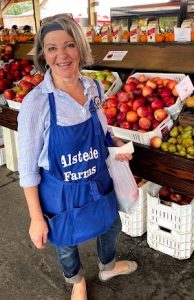Composting to Reduce Food Waste
Composting to Reduce Food Waste
Compost is made up of organic material that’s added to soil providing nutrients to help plants grow. Composting is not only good for plants, it also helps reduce your carbon footprint which is so important to many of us today. Kitchen food scraps and yard waste, experts say, make up more than 30 percent of… Read More »

Kitchen food scraps and yard waste, experts say, make up more than 30 percent of consumer home waste which could be composted instead. Composting prevents these materials from going into landfills and releasing methane, a potent greenhouse gas. Composting benefits list also include creating an enriching soil, reducing the need for chemical fertilizers, encouraging the production of beneficial bacteria and empowers the home cook or gardener to reduce food waste through recycling materials.
Composting is easy, takes little time and can be done with simple materials in your home. There are three types of compost categories; browns, greens, and water and an ideal compost pile should have an equal amount of browns to greens. The brown materials provide carbon for your compost and include materials such as; dead leaves, branches, and twigs, the green materials provide nitrogen and include grass clippings, vegetable waste, fruit scraps, and coffee grounds, and the water provides moisture to help break down the organic matter and develop the compost.
Helpful tips on items you can compost:
- Fruits and vegetables, eggshells, coffee grounds, tea bags, nut shells, shredded newspaper, paper, yard & grass trimmings, hay & straw, leaves & sawdust.
Helpful tips on items not to compost: (avoid attracting pests & flies)
- Dairy products
- Meat or fish bones and scraps
- Yard trimmings treated with chemical pesticides
How to start backyard composting:
- Select a dry, shady spot near a water source for your compost pile or bin.
- Add brown and green materials as they are collected, making sure larger pieces are chopped or shredded.
- Moisten dry materials as they are added.
A special note from our culinary & education specialist, Miss Jenn, on reducing food waste in your home

Best wishes from our farm kitchen to yours!







